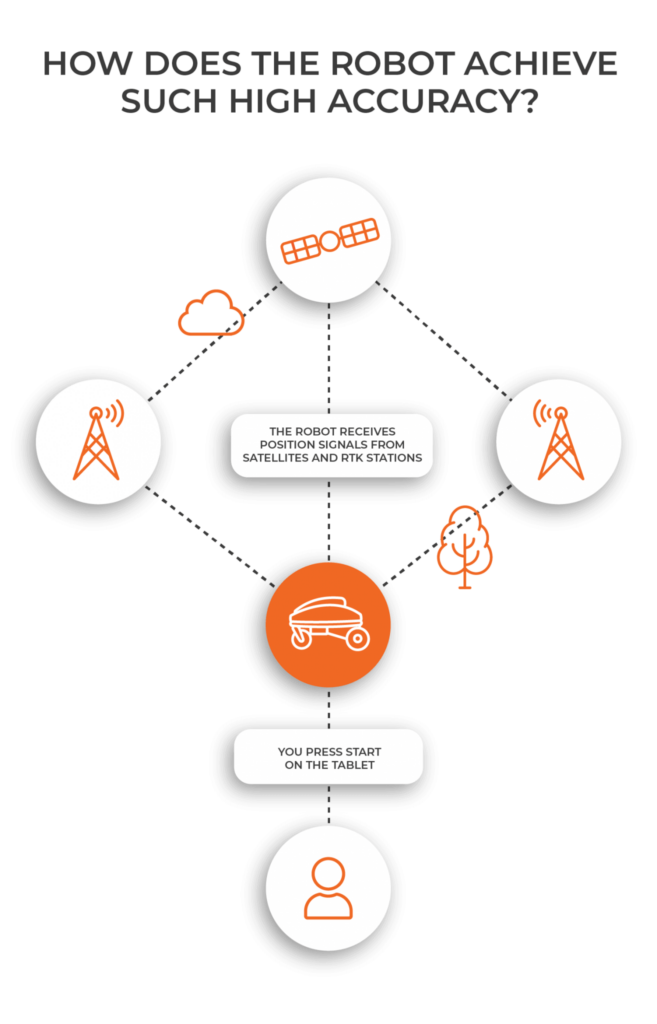The TinyLineMarker empowers groundskeepers and maintenance crews to efficiently mark multiple sports pitches with remarkable accuracy. How does it work? These innovative robots rely on a network of satellites and correction signals to pinpoint their location on the pitch, ensuring precise line placement.

We’re all familiar with satellites—they make our phones, GPS, and even weather forecasts work. TinyLineMarker robots use this technology to mark pitches of all kinds. Using a tablet, users can either position pitches directly on a map or use the robot to place them based on predefined locations, a feature especially helpful for fields with fixed goal posts.
GPS signals can sometimes experience interference due to weather or other factors. This is where the Real-Time Kinematic (RTK) network comes in. RTK is a system of reference stations, similar to cell towers, that constantly monitor and correct satellite signals. This means the robots continuously receive accurate positioning data, ensuring a consistent 0.8-inch precision, even in challenging conditions.
The TinyLineMarker series offers the perfect line-marking solution for a variety of sports pitches, whether you’re working at a high school, college, or local sports club. The lightweight and easy-to-use models are perfect for smaller clubs with various sports. The 2.6-gallon paint container covers a full-sized soccer field in under 20 minutes, saving you time and effort.
The TinyLineMarker’s communication with satellites and reference stations allows groundskeepers to effortlessly mark a soccer field with 0.8-inch precision. Once marked, the pitch layout can be saved in the cloud for future use, making remarking a breeze. Any changes to pitch dimensions or locations are easily updated on the tablet, ensuring the robot always paints the lines exactly where you need them. To see the TinyLineMarker in action, check out our customer stories.
Both RTK networks and reference stations can be used for line marking. A reference station is a local unit placed next to the sports pitches, while RTK is a subscription-based service. The reference station serves the same purpose as the RTK network, which is to correct the satellite signal. Since both setups rely on the accuracy of satellite signals, they achieve the same level of accuracy and precision. As a result, RTK has become a standard in numerous industries.
We consulted a land surveyor to share his insights on the benefits of using the RTK network over base stations. Watch the video below to see why he highlights the ease and reliability of RTK for precise line marking.
The main challenge with RTK is cell coverage. In areas with poor reception, the robots might struggle to receive satellite signals. This is similar to how smartphones lose service in remote areas. However, most of our customers work in areas with sufficient cell coverage for the robots to function optimally.
High structures like stands, fences, or trees can sometimes interfere with satellite signals. The impact on line marking will depend on the specific local conditions.
If you have more questions about the technology behind our robots and how they can benefit your line marking operations, get in touch with us and we will gladly answer all your questions.
© 2024 TinyMobileRobots